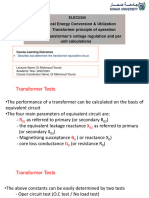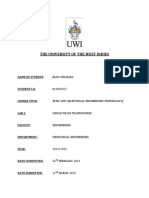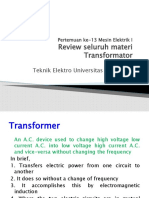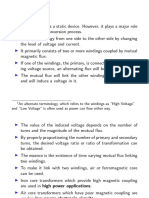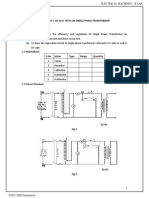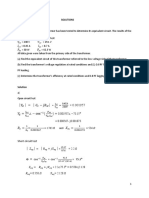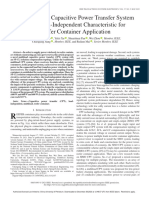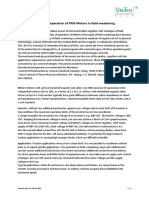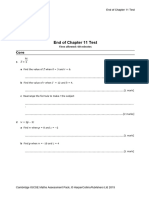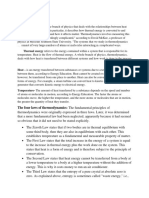0% found this document useful (0 votes)
67 views5 pagesTransformers
1) The voltage regulation of a transformer is a measure of how much the output voltage varies from no load to full load, due to the series impedances in the transformer windings.
2) A transformer's equivalent circuit model includes series resistances and reactances to model copper and core losses. These impedances cause the output voltage to decrease slightly under load.
3) The voltage regulation depends on load power factor - it is highest for lagging power factors and can even be negative for leading power factors, where the loaded output voltage is greater than the no-load voltage.
Uploaded by
Moawiah Al-HawajrehCopyright
© © All Rights Reserved
We take content rights seriously. If you suspect this is your content, claim it here.
Available Formats
Download as PDF, TXT or read online on Scribd
0% found this document useful (0 votes)
67 views5 pagesTransformers
1) The voltage regulation of a transformer is a measure of how much the output voltage varies from no load to full load, due to the series impedances in the transformer windings.
2) A transformer's equivalent circuit model includes series resistances and reactances to model copper and core losses. These impedances cause the output voltage to decrease slightly under load.
3) The voltage regulation depends on load power factor - it is highest for lagging power factors and can even be negative for leading power factors, where the loaded output voltage is greater than the no-load voltage.
Uploaded by
Moawiah Al-HawajrehCopyright
© © All Rights Reserved
We take content rights seriously. If you suspect this is your content, claim it here.
Available Formats
Download as PDF, TXT or read online on Scribd
/ 5
